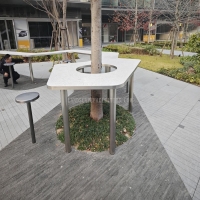Welcome to the website for landscape facilities products and knowledge.
What are the most important factors in determining the ideal table surface reflectivity for different lighting conditions?
The ideal table surface reflectivity is crucial for creating comfortable and productive environments, as it directly impacts visual comfort, glare reduction, and task performance across different lighting conditions. Several key factors determine the optimal reflectivity level for any given situation. First, consider the primary light sources in the environment—natural daylight, overhead fluorescent lighting, or task lamps each interact differently with table surfaces. Daylight typically requires lower reflectivity surfaces (10-30% LRV) to prevent harsh glare, while dimmer artificial lighting may benefit from slightly higher reflectivity (30-50% LRV) to aid light distribution.
The specific tasks performed at the table significantly influence reflectivity requirements. Computer workstations demand matte surfaces with reflectivity below 30% to minimize screen glare, while drafting tables or reading surfaces might accommodate slightly higher reflectivity up to 45% for better illumination of physical materials. Material composition plays an equally important role—natural wood typically offers 15-40% reflectivity, laminates range from 20-60%, while glass surfaces can exceed 70% reflectivity.
Environmental context cannot be overlooked. Rooms with multiple light sources or variable daylight require surfaces at the lower end of the reflectivity spectrum (20-35%), while consistently artificially lit spaces can safely utilize medium reflectivity surfaces (35-50%). The color temperature of lighting also interacts with reflectivity—cooler lights (5000K+) often work better with lower reflectivity surfaces, while warmer lights (2700-3500K) pair well with moderately reflective surfaces.
User visual acuity and age represent another critical consideration. Older users typically benefit from slightly higher reflectivity surfaces (35-50%) to compensate for reduced light transmission through aging eyes, while younger users may prefer lower reflectivity to prevent eye strain. The integration of these factors—light source characteristics, task requirements, material properties, environmental conditions, and user needs—creates a comprehensive framework for determining optimal table surface reflectivity. Regular assessment of these elements ensures that table surfaces contribute positively to visual ergonomics rather than creating distracting reflections or insufficient light reflection that compromises functionality. Through careful consideration of these interconnected factors, one can achieve the perfect balance between sufficient illumination and glare prevention for any specific application.
Related search:

Recommendation
An outdoor bar counter with stainless steel and terrazzo materials in an irregular shape